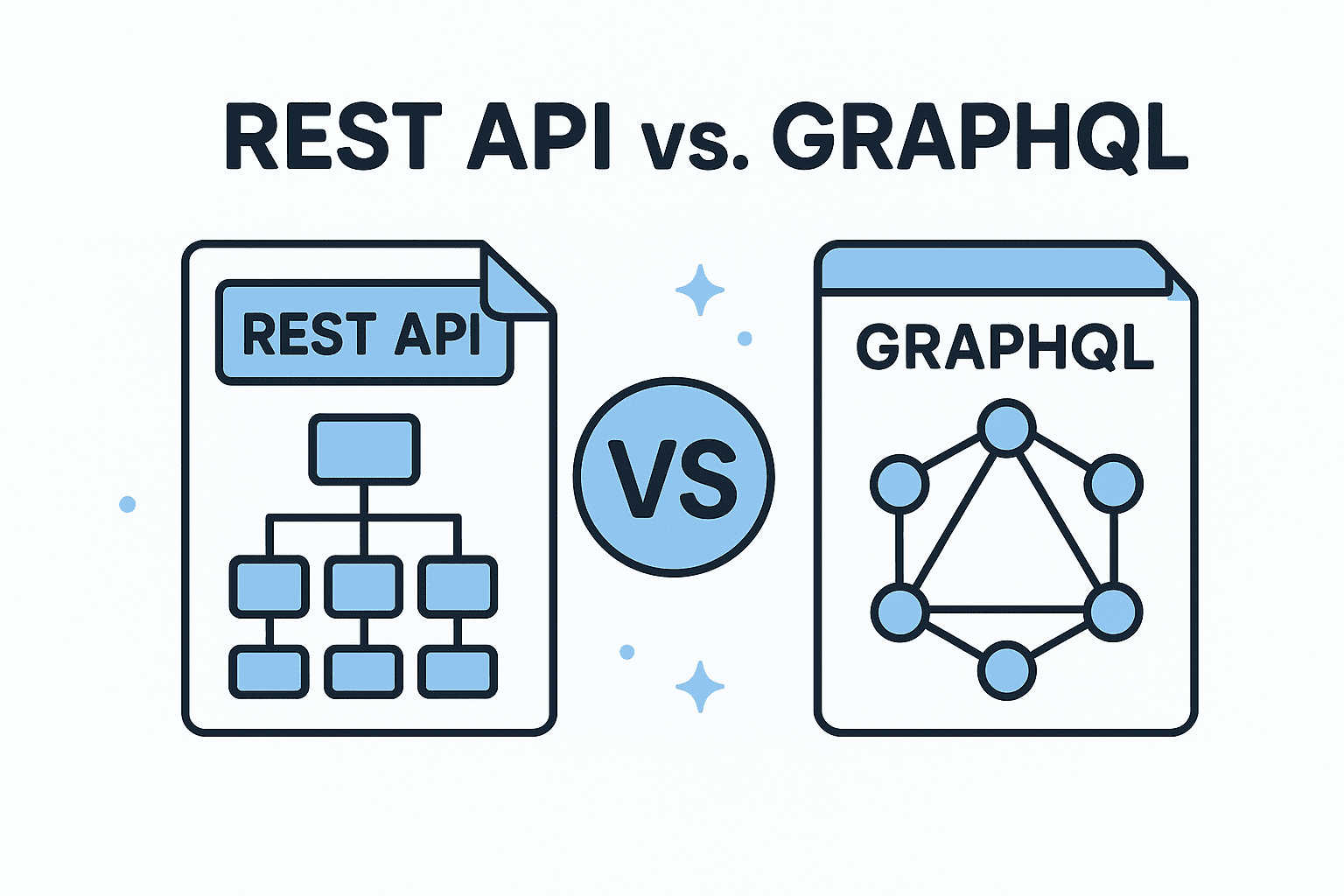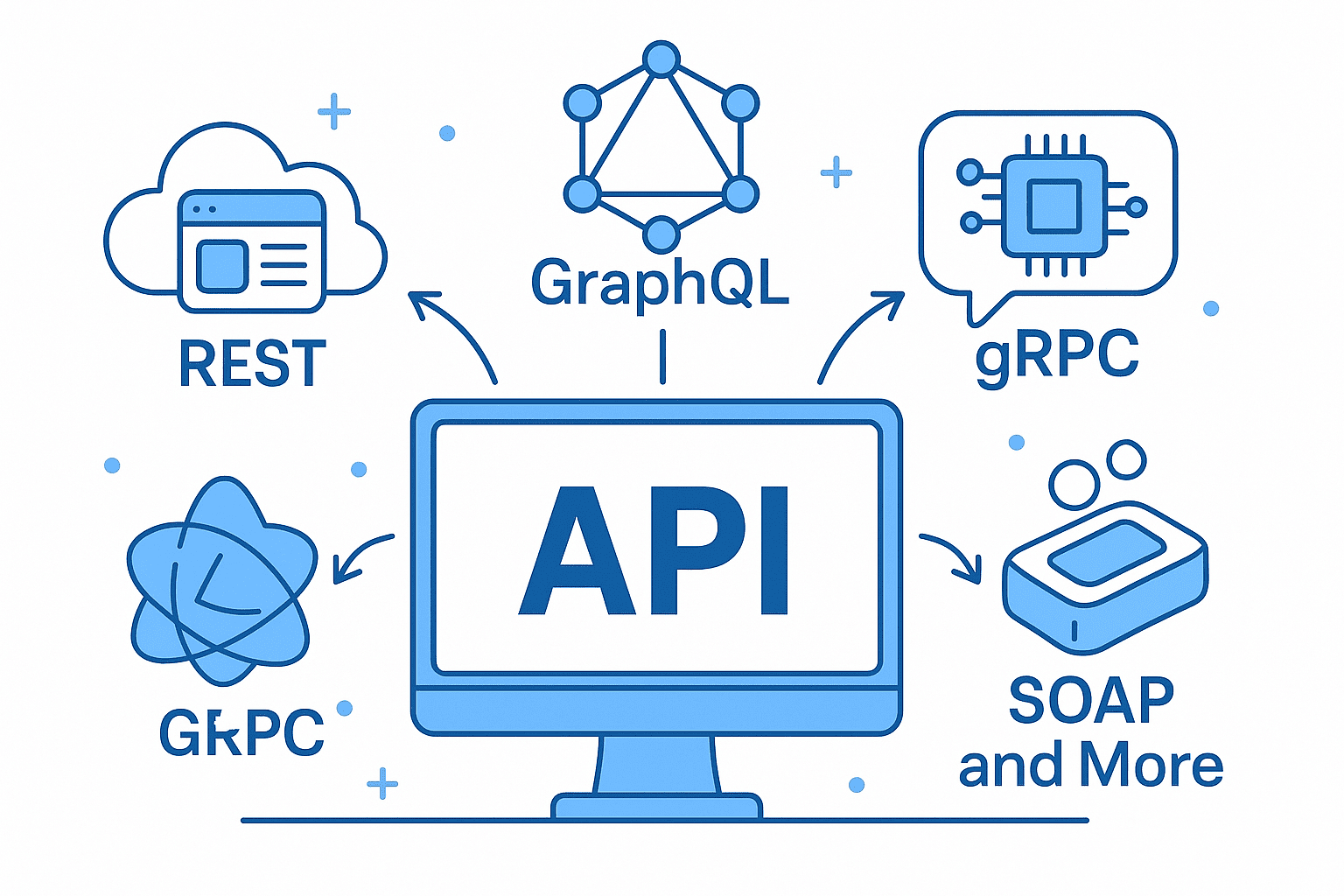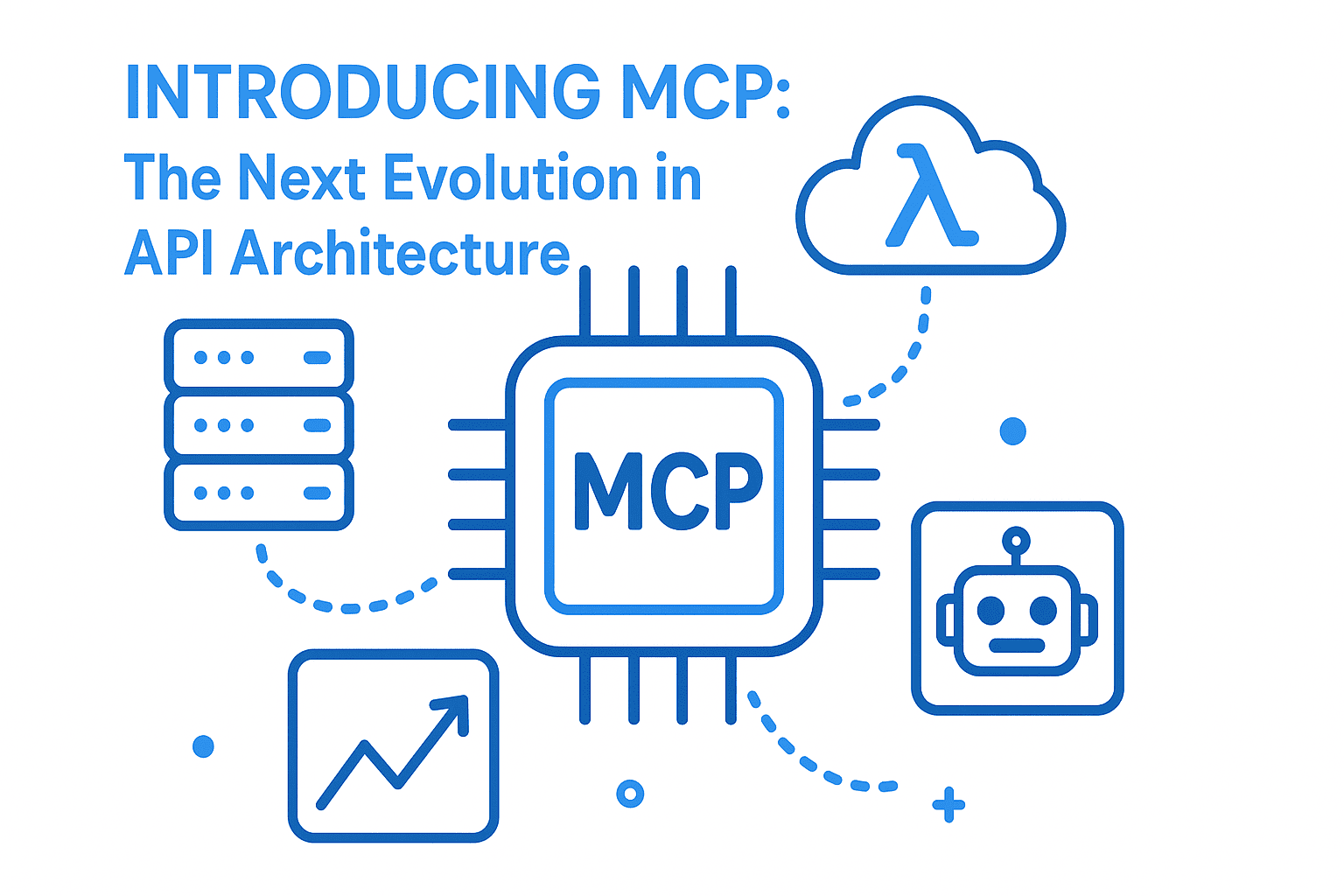In the modern web development landscape, APIs are the backbone of communication between different systems. Two popular approaches to building APIs are REST (Representational State Transfer) and GraphQL, each with its own strengths and weaknesses. Understanding the differences between them can help developers choose the right tool for their project, whether it’s a simple CRUD application or a complex, data-driven platform.
1. Architecture: REST vs. GraphQL
REST APIs are built on the principles of stateless communication using standard HTTP methods like GET, POST, PUT, and DELETE. Each request targets a specific resource identified by a URL (e.g., /users/123 for user data). REST relies on hypermedia to drive interactions, making it intuitive and well-suited for traditional web applications.
GraphQL, on the other hand, is a query language and runtime that allows clients to request exactly the data they need, in any format. Instead of multiple endpoints, GraphQL uses a single endpoint (e.g., /graphql) where clients submit queries to fetch nested data structures. This flexibility makes it ideal for applications requiring dynamic, client-side control over data retrieval.
2. Data Fetching: Precision vs. Resource-Based Requests
REST APIs require multiple requests to fetch related data, which can lead to inefficiencies. For example, to retrieve a user along with their posts, you might need two separate GET requests: /users/123 and /posts?userId=123. This can result in over-fetching (receiving unnecessary data) or under-fetching (needing additional requests to fill gaps).
GraphQL solves this by enabling single, nested queries. A client can request a user and their posts in one query:
query {
user(id: "123") {
id
name
posts {
title
content
}
}
}
This approach reduces network overhead and ensures clients receive only the data they need, improving performance and reducing parsing complexity.
3. Performance: Minimizing Overhead
-
REST can suffer from over-fetching, where the client receives more data than required. For instance, a mobile app might request all user details (including unused fields like "bio" or "location") when only the username is needed. This increases bandwidth usage and processing time.
-
GraphQL’s precision reduces over-fetching by allowing clients to specify exactly which fields they want. This is particularly beneficial for mobile apps and frontends that evolve rapidly, as the server can adapt to changing client needs without requiring API versioning.
However, GraphQL queries can become complex and slow if not optimized, especially for deeply nested or large data sets. Proper schema design, query validation, and caching are essential to maintain performance.
4. Scalability: Statelessness vs. Query Complexity
REST is inherently stateless, which makes it easier to scale horizontally across multiple servers. Since each request contains all necessary information, REST services are well-suited for distributed systems and microservices architectures.
GraphQL introduces challenges in scalability, particularly with deeply nested queries that can strain server resources. While GraphQL APIs can be optimized (e.g., using caching layers like Redis or Apollo), poorly designed queries may lead to increased latency and server load. Additionally, caching in GraphQL is more complex due to the variability of query structures.
5. Use Cases: When to Choose REST or GraphQL
-
REST is ideal for straightforward, resource-based APIs where the client and server have a stable relationship. It’s well-suited for traditional web applications, IoT devices, or systems requiring robust tooling and documentation (e.g., Swagger/OpenAPI). REST’s maturity and wide ecosystem make it a safe choice for projects with predictable data needs.
-
GraphQL excels in scenarios where clients require flexible, dynamic data retrieval. It’s perfect for applications with evolving frontends (e.g., React or Vue.js), where the same backend can serve multiple clients with diverse data requirements. It’s also advantageous for internal tooling, where developers need precise control over what data is fetched.
6. Drawbacks and Trade-offs
-
REST has a steeper learning curve for advanced features like authentication (OAuth, JWT) and rate limiting. However, its simplicity makes it easier to integrate with legacy systems and tools.
-
GraphQL requires careful planning to avoid performance pitfalls. Developers must implement query validation, rate limiting, and caching strategies to ensure scalability. Additionally, GraphQL’s flexibility can lead to overcomplicated schemas if not managed properly.
7. Conclusion: REST vs. GraphQL – Which to Choose?
Both REST and GraphQL have their place in modern development, depending on the project’s needs:
-
Use REST when building stable, resource-based APIs with predictable data structures. It’s a tried-and-true approach for systems where the client-server relationship is well-defined.
-
Use GraphQL when you need dynamic data queries, especially in client-heavy applications or when the frontend evolves rapidly. It offers unparalleled flexibility but requires thoughtful implementation to avoid performance bottlenecks.
In the end, the choice between REST and GraphQL often comes down to team expertise, project requirements, and long-term scalability goals. Evaluating each option’s pros and cons will help you make an informed decision that aligns with your application’s needs.
🚀 Let’s build something amazing! If you have a project in mind or need help with your next design system, feel free to reach out.
📧 Email: safi.abdulkader@gmail.com | 💻 LinkedIn: @abdulkader-safi | 📱 Instagram: @abdulkader.safi | 🏢 DSRPT
Drop me a line, I’m always happy to collaborate! 🚀



